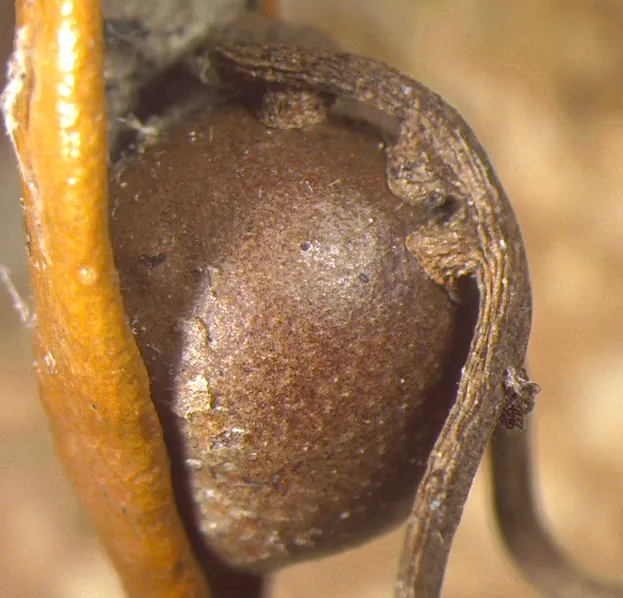Rice University biologists have travelled to the native scrub habitat of the parasitic love vine, Cassytha filiformis (Lauraceae), to observe a strange parasitic interaction first observed in their labs.
Evolutionary biologist Scott Egan set out on this expedition to acquire visual confirmation that love vine, a parasitic plant, was in fact not feeding on trees, but the tumour-like growths formed by the gall wasp.
Typically, parasitic plants attack other plants to feed, however the love vine attacks the natal chambers of gall-forming insects leaving the larvae inside mummified.
Watch a video of these duelling parasites on South Florida oak trees:
The first to notice the strange behaviour of love vines were Graduate student Linyi Zhang and a group of undergraduates. When Zhang first brought the vine with an S-shaped twist around a gall formed on an oak leaf to Egan, she was met with some doubt.
After discussing the surprise finding, they decided that there was only one way to find out. “I cut it in half, and right in the centre was a fully mature but mummified adult wasp,” Egan recalls.
In the months since the finding, Egan, Zhang, Glen Hood Postdoctoral Fellow at Rice Academy, and co-author Mattheau Commerford, have amassed dozens more examples of this interaction.
Out of 51 dissected samples of galls formed by Belonocnema treatae attacked by love vines, 23 contained a mummified adult wasp. In contrast, only two of the 101 galls not attacked by vines contained dead wasps.

This exciting find shows a new aspect of nature that hadn’t previously been noticed and because it could offer clues about ways to control agricultural pests and perhaps even fight cancer.
Love vines attack these ‘tumours’ formed by the gall wasp, which are essentially tree cells that have just been reprogrammed to grow and behave in a way that is ultimately harmful to the tree.
“If we can find out how the vines identify the galls, how they zero in on them, it could potentially provide new clues for targeting and fighting cancer,” Egan says.
“This is the first time anyone has ever discovered a parasitic plant and parasitic gall wasp interacting on a shared host plant,” Egan says.
“This could be unique, but biologists have catalogued more than 1,300 species of gall-forming wasps and more than 4,000 species of parasitic plants, so this could just be the tip of the iceberg.”
There are, of course, well documented carnivorous plants, which can consume insects outright, and other species that change the behaviour of their host plant. However, this is the first evidence of a parasitic plant feeding on nutrient rich galls desiccating the larvae inside.
Read more in a journal entry to Current Biology
